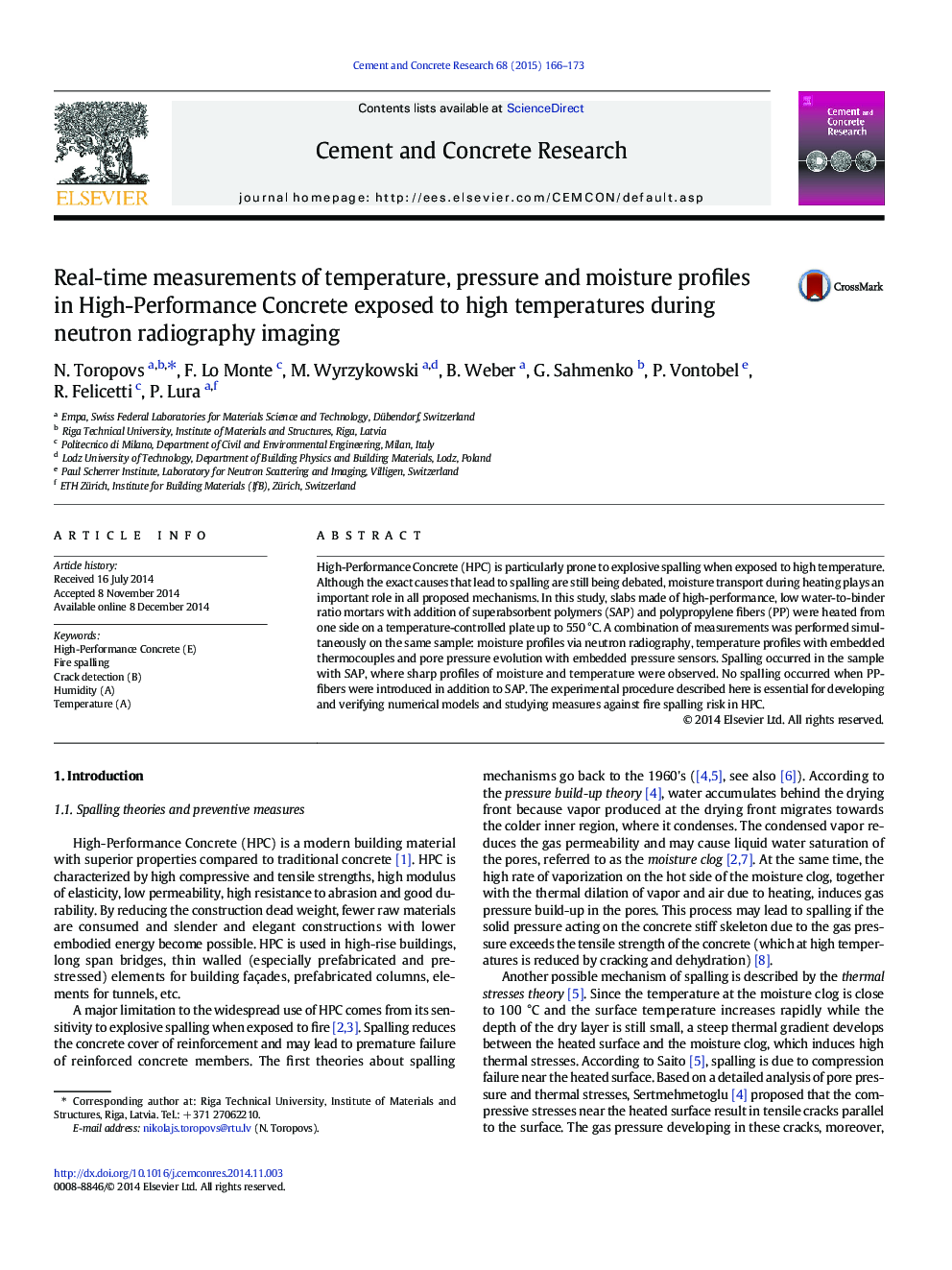| Article ID | Journal | Published Year | Pages | File Type |
|---|---|---|---|---|
| 1456244 | Cement and Concrete Research | 2015 | 8 Pages |
High-Performance Concrete (HPC) is particularly prone to explosive spalling when exposed to high temperature. Although the exact causes that lead to spalling are still being debated, moisture transport during heating plays an important role in all proposed mechanisms. In this study, slabs made of high-performance, low water-to-binder ratio mortars with addition of superabsorbent polymers (SAP) and polypropylene fibers (PP) were heated from one side on a temperature-controlled plate up to 550 °C. A combination of measurements was performed simultaneously on the same sample: moisture profiles via neutron radiography, temperature profiles with embedded thermocouples and pore pressure evolution with embedded pressure sensors. Spalling occurred in the sample with SAP, where sharp profiles of moisture and temperature were observed. No spalling occurred when PP-fibers were introduced in addition to SAP. The experimental procedure described here is essential for developing and verifying numerical models and studying measures against fire spalling risk in HPC.
